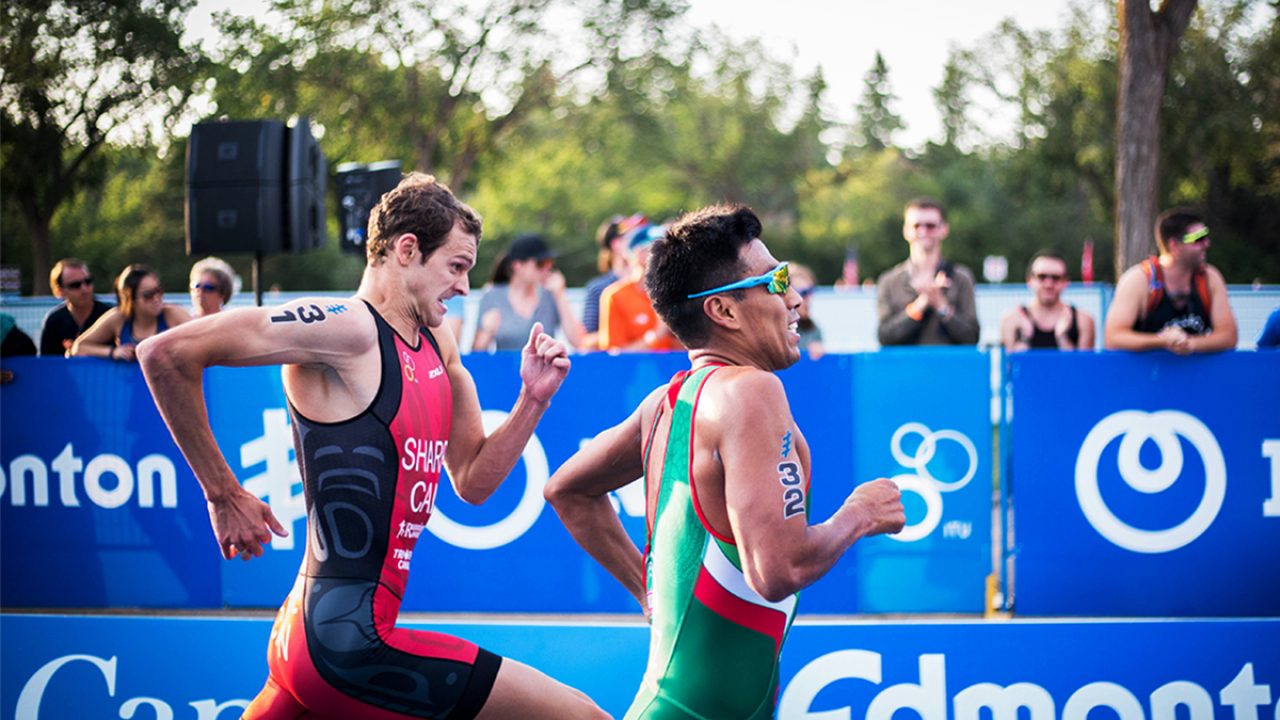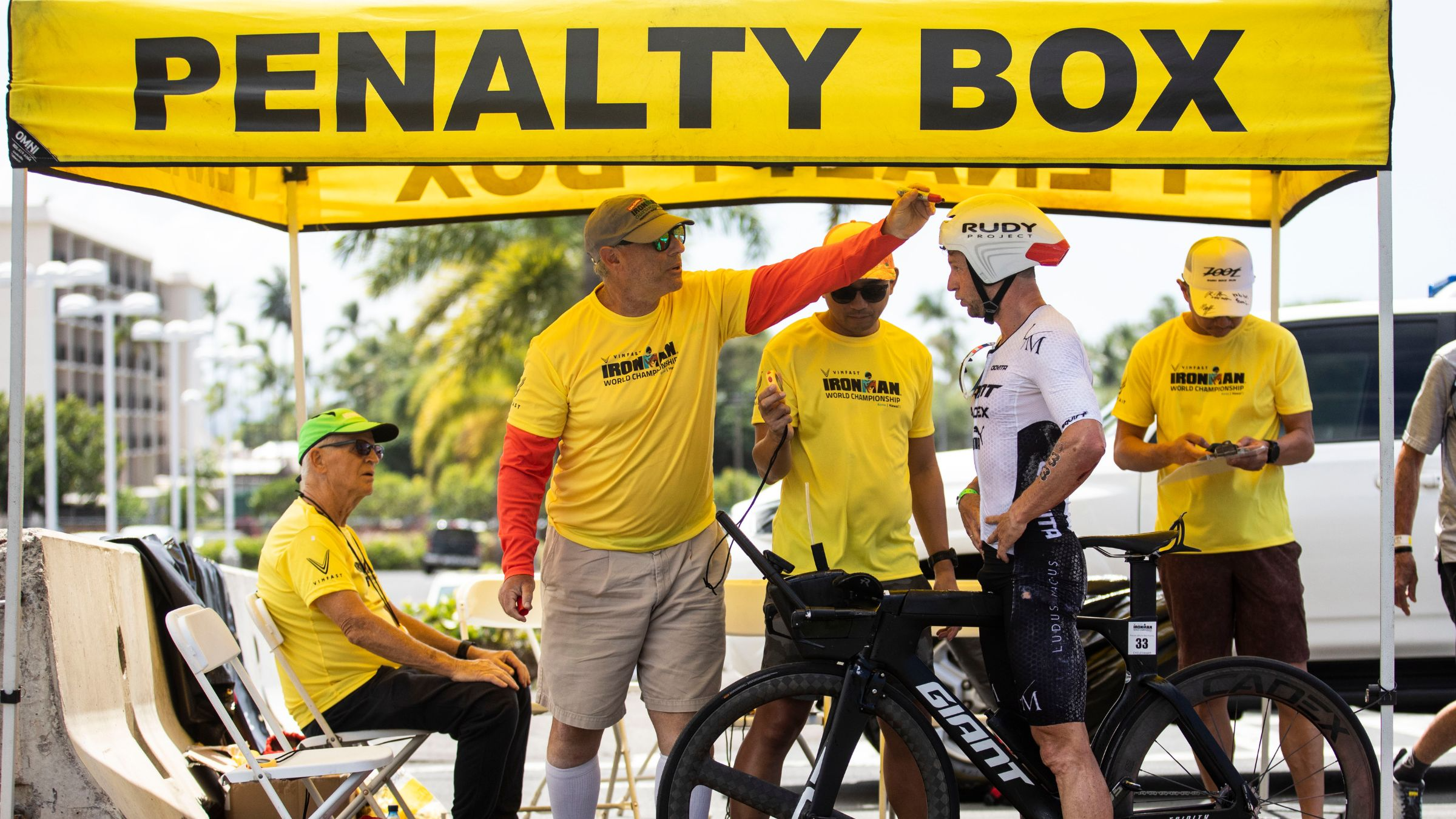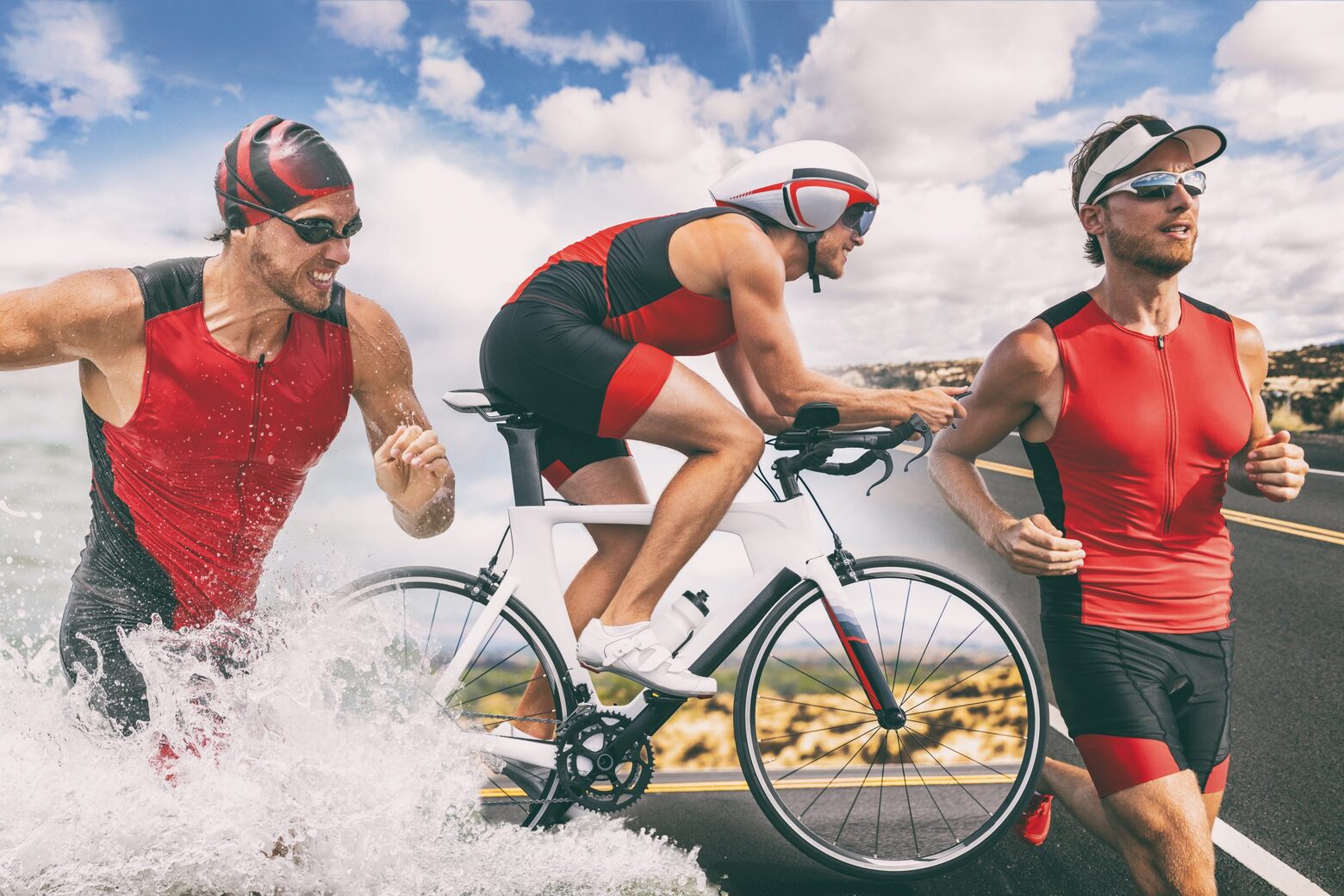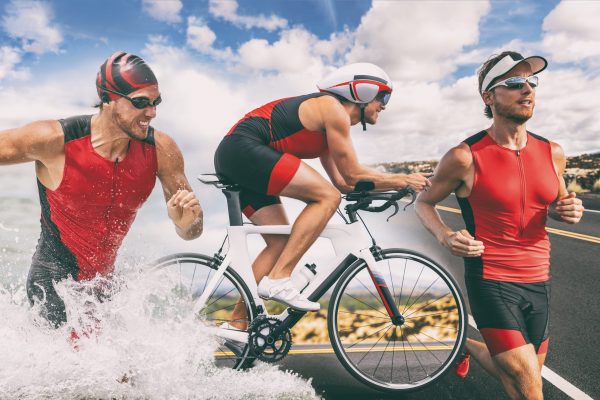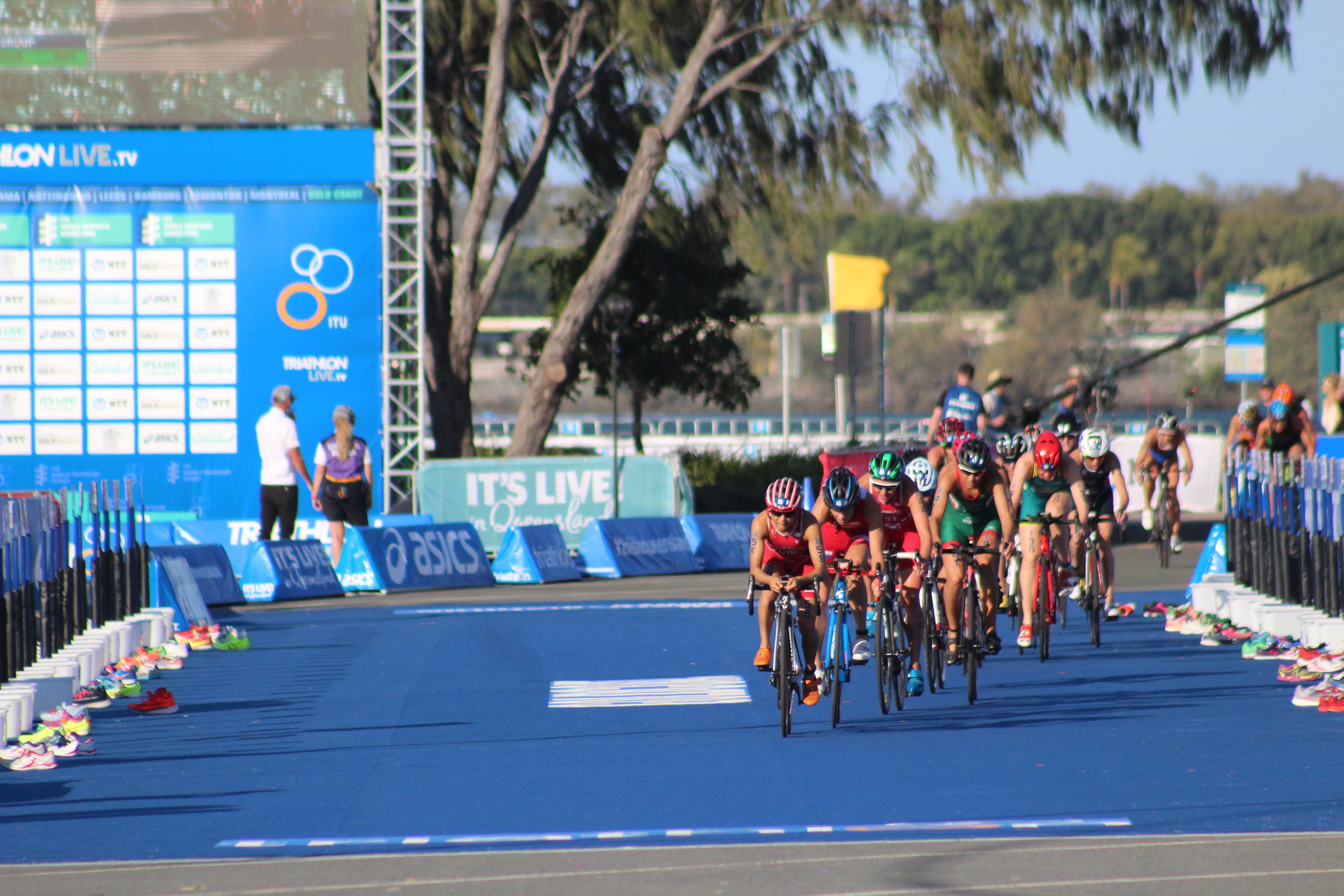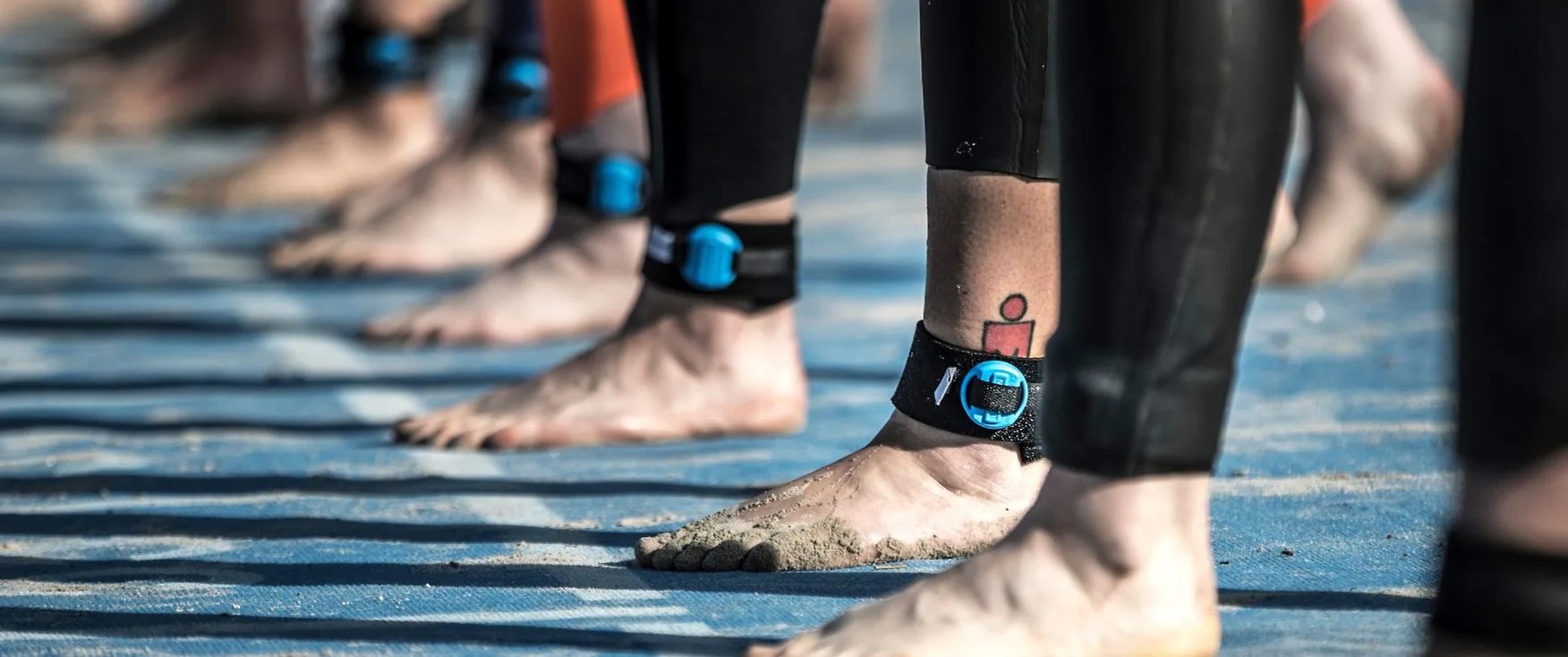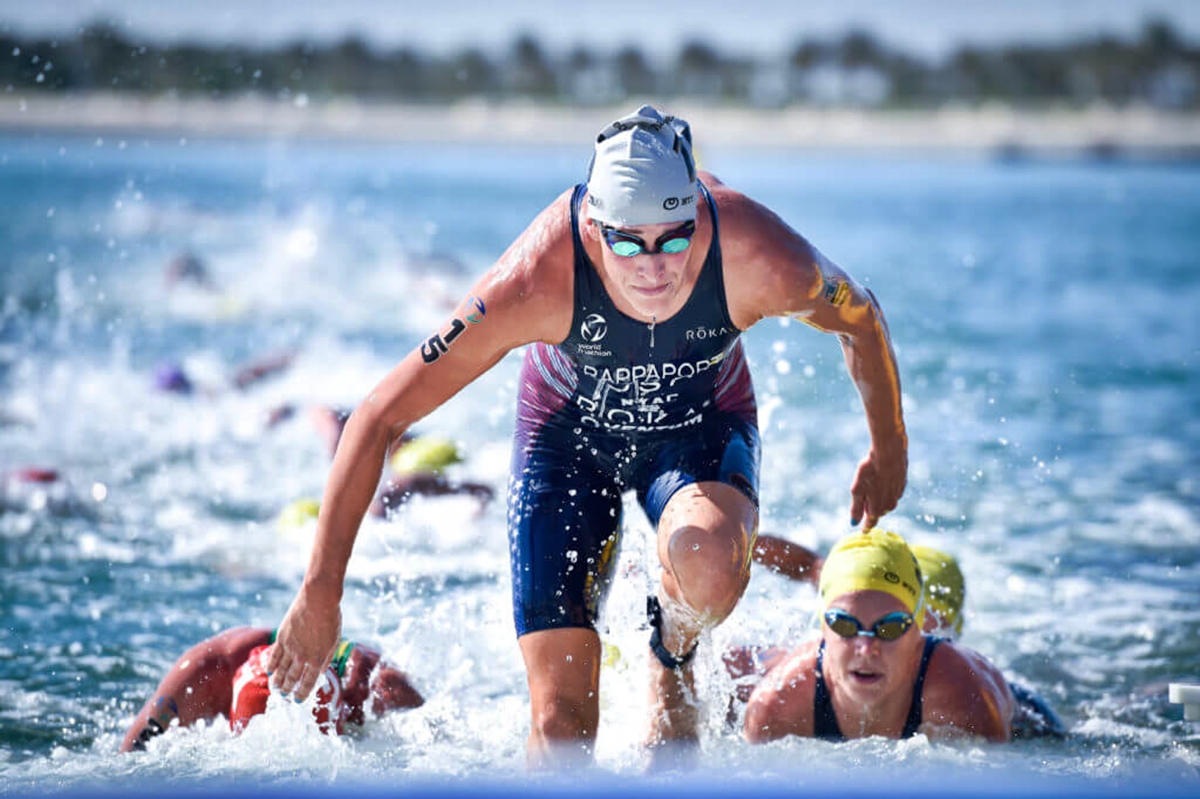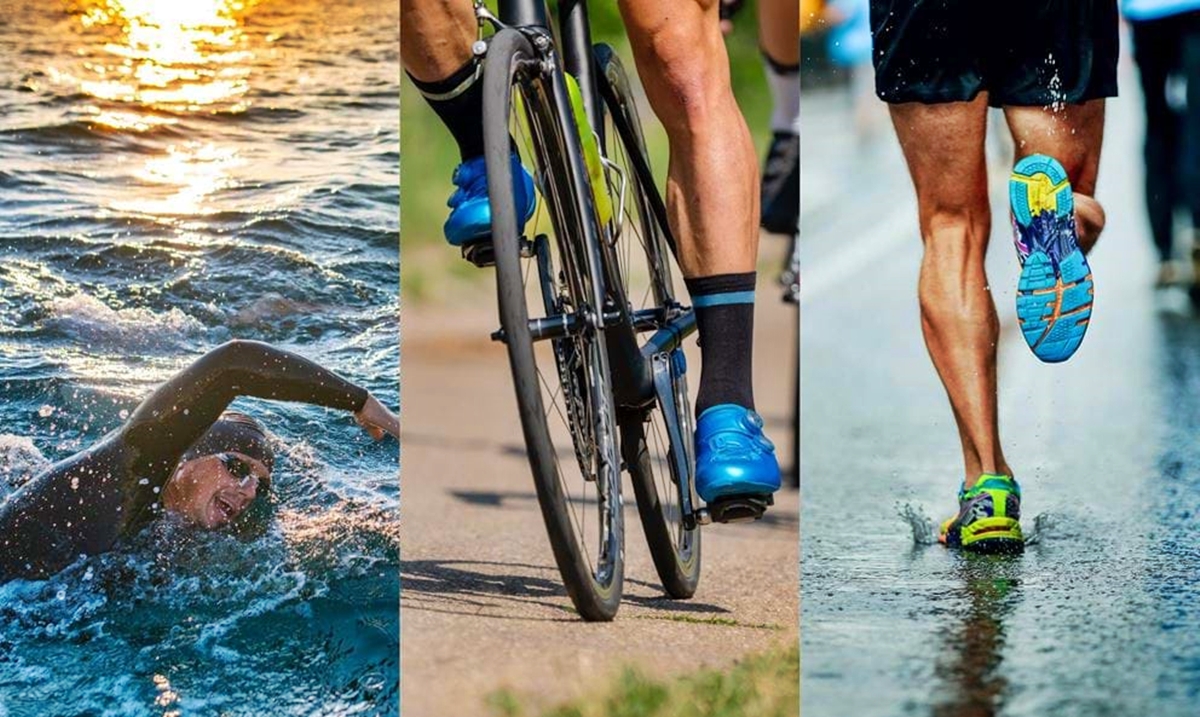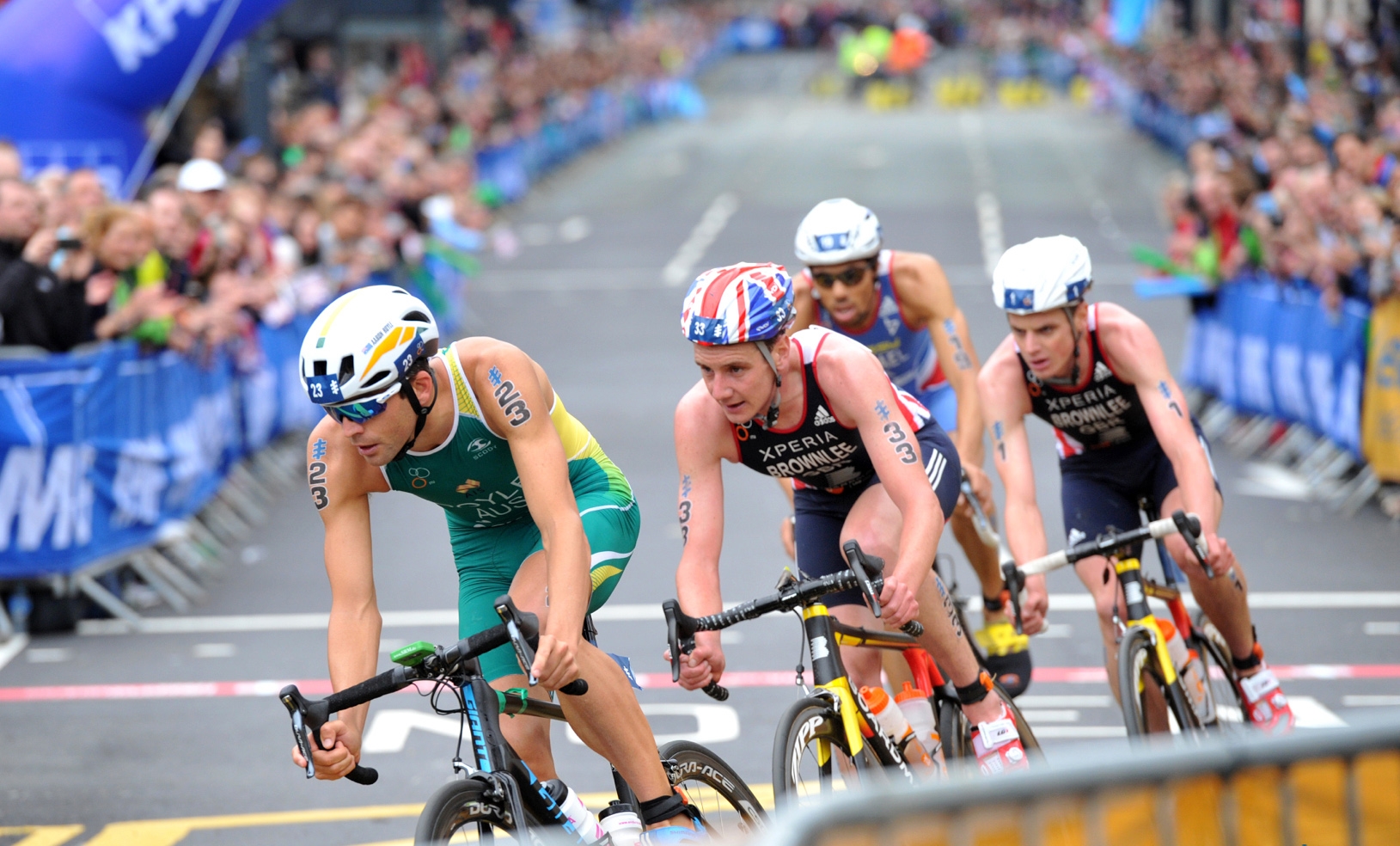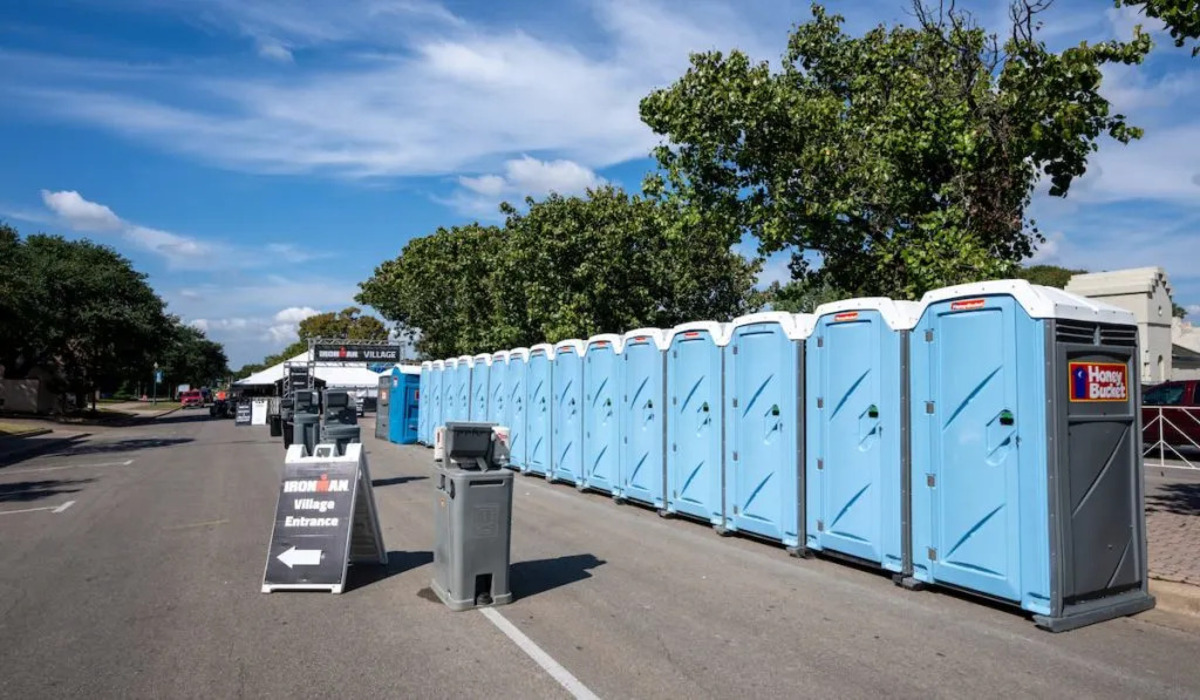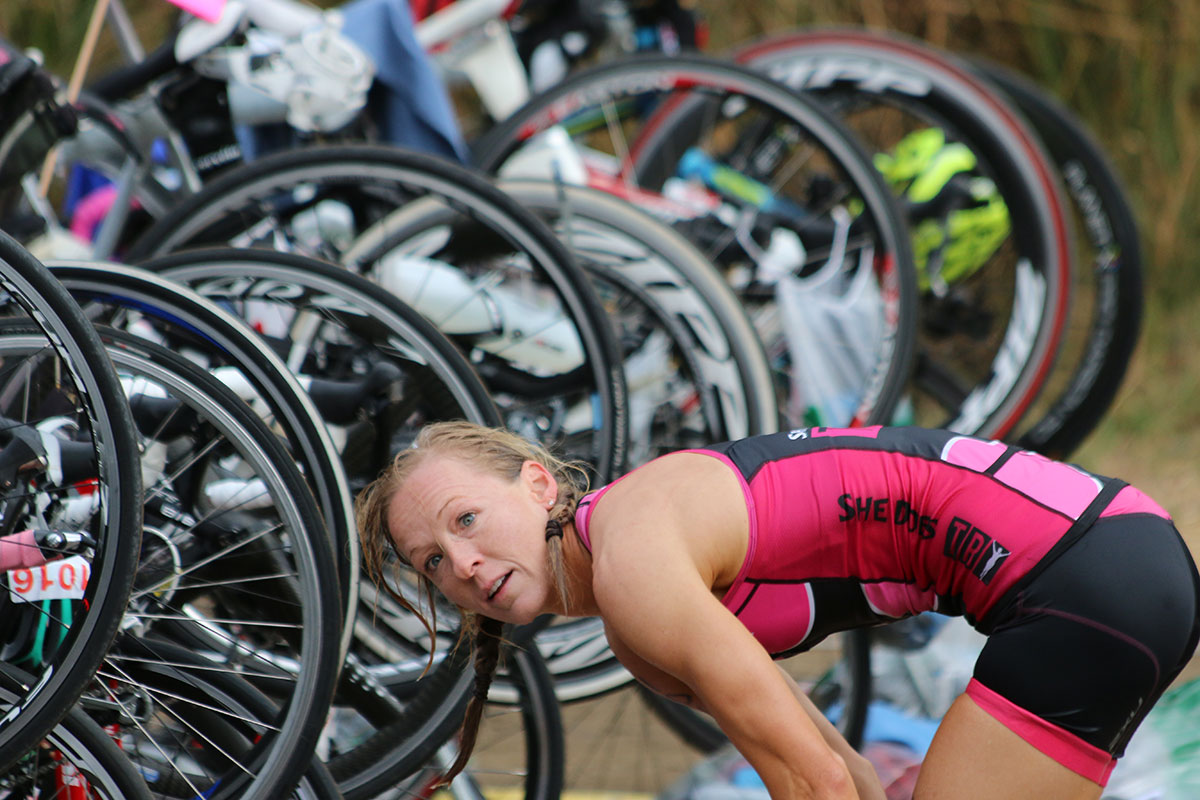

Featured
How To Transition During Triathlon
Modified: January 2, 2024
Looking to transition smoothly during a triathlon? Get all the tips and tricks you need in this featured guide.
Introduction
Triathlon is a demanding and exhilarating sport that combines swimming, cycling, and running into a single event. It tests athletes’ endurance, strength, and mental fortitude. But what sets triathlon apart from other sports is the transitions. These short moments between each leg of the race can make or break an athlete’s overall performance. Transitioning efficiently and smoothly is an essential skill that can significantly impact an athlete’s race time and overall experience.
Understanding the transitions and mastering the art of transitioning smoothly is vital for triathletes of all levels. Whether you’re a beginner just starting or an experienced athlete looking to improve your race times, this article will provide you with the knowledge and strategies needed to make the most of your transitions.
In this article, we will explore the different transitions in triathlon, including the swim-to-bike transition (T1) and the bike-to-run transition (T2). We will discuss how to properly prepare for transitions, set up the transition area, and execute efficient transitions during the race. Additionally, we will share some strategies and tips to help you optimize your transitions and avoid common mistakes.
By the end of this article, you will have a comprehensive understanding of the importance of transitions in triathlon and the necessary skills to excel in this crucial aspect of the race. Let’s dive in and learn how to transition like a pro!
Understanding the Transitions in Triathlon
Transitions in triathlon refer to the period between each leg of the race when athletes switch from one discipline to another. These transitions are a unique aspect of triathlon and require careful planning, practice, and efficiency. There are two main transitions in triathlon: the swim-to-bike transition (T1) and the bike-to-run transition (T2). Let’s take a closer look at each of these transitions and their significance in the race.
T1, the swim-to-bike transition, is the first transition that occurs after completing the swim leg. During T1, athletes take off their wetsuits (if worn), put on their cycling gear, and prepare for the bike leg. Time spent in T1 can vary depending on the individual, but a smooth and quick transition can save valuable minutes.
T2, the bike-to-run transition, is the second transition that occurs after completing the bike leg. During T2, athletes dismount from their bicycles, change into their running gear, and mentally prepare themselves for the final run leg. Similar to T1, a well-executed T2 can significantly impact an athlete’s overall race time.
The transitions in triathlon are not only about changing gear; they also involve shifting focus and adapting to the demands of each discipline. Transitioning smoothly requires coordination, mental agility, and practice. It’s not uncommon for beginners to experience a sense of disorientation and confusion during transitions, but with time and experience, athletes can become more efficient and confident in this aspect of the race.
One of the key goals of the transitions is to minimize the time spent between disciplines while ensuring a smooth and seamless transition. This means having a well-organized transition area, having a clear plan of action, and practicing the transition process during training sessions. The better an athlete becomes at transitioning, the more time and energy they will save, ultimately leading to a better overall race performance.
Understanding the transitions in triathlon is crucial for athletes to optimize their race experience. By recognizing the significance of T1 and T2 and the impact they can have on overall race time, athletes can prioritize their training and preparation to excel in these critical moments. In the following sections, we will explore how to prepare for transitions, set up the transition area, and execute efficient transitions during a race.
Preparing for Transitions
Proper preparation is key to executing smooth and efficient transitions in triathlon. Here are some essential tips to help you prepare for the transitions and make the most out of your race day:
- Practice, practice, practice: Transitions should be an integral part of your training routine. Set aside dedicated sessions to practice transitioning from the swim to the bike and from the bike to the run. By rehearsing the process repeatedly, you’ll familiarize yourself with the sequence of steps and build muscle memory for a smoother transition on race day.
- Create a transition plan: Before entering the race, develop a detailed transition plan. Visualize each step of the transition, including what gear you’ll need, the order in which you’ll put them on, and any specific techniques or strategies you’ll utilize. Having a well-thought-out plan will help minimize confusion and keep you focused during the transitions.
- Pack your transition bag: Create a checklist of all the necessary items for each transition and pack them in a dedicated transition bag. This bag should include items such as cycling shoes, running shoes, a helmet, nutrition, a towel, and any other essentials you’ll need. Check your bag before race day to ensure you have everything you need and that it’s in good condition.
- Do a dress rehearsal: Prior to the race, select a training session to simulate the race-day conditions. Set up a mock transition area with your gear and practice going through the entire transition process. This will allow you to identify any potential issues or inefficiencies and make any necessary adjustments before race day.
- Know the layout: Familiarize yourself with the race venue and the layout of the transition area. Take note of the entrance and exit points, the location of your bike rack, and where you’ll be entering and exiting the transition area. Knowing the layout in advance will save you time and reduce the chance of getting disoriented during the transitions.
By preparing adequately for transitions, you set yourself up for success on race day. Practicing, creating a plan, packing your transition bag, doing dress rehearsals, and familiarizing yourself with the layout will help you execute smooth and efficient transitions, giving you a competitive edge and ensuring a more enjoyable race experience.
Setting Up the Transition Area
The transition area is where the magic happens in triathlon. It serves as a hub where athletes switch from one discipline to another. Setting up your transition area effectively can save you valuable time and make your race experience more seamless. Here are some key steps to follow when setting up your transition area:
- Arrive early: Arriving at the race venue early allows you to choose a prime spot in the transition area. Ideally, you want a spot that is easily accessible and close to the bike exit and run start. Giving yourself ample time to set up will also reduce stress and ensure that you have everything organized before the race.
- Scope out the transition area: Take a walk-through of the transition area to familiarize yourself with its layout. Pay attention to the location of the swim exit, bike entrance, bike exit, and run start. Understanding the flow of the transition area will help you navigate it smoothly on race day.
- Organize your gear: Lay out your gear in a systematic manner, ensuring it is easily accessible. Set up your bike shoes, helmet, sunglasses, and any other cycling gear ready for quick use. Place your running shoes, race belt, hat, and nutrition for the run leg in a separate area. Keep everything neat and organized to minimize the chances of misplacing or fumbling for your gear during transitions.
- Mark your spot: Use visual cues to mark your spot in the transition area. If permitted, tie a brightly colored towel or balloon to your bike rack or place a distinctive item near your gear. This will help you locate your spot quickly, especially in a crowded and hectic transition area.
- Take note of landmarks: Identify notable landmarks near your transition area spot to help you navigate back during transitions. Look for unique signs, trees, or other identifiable objects that can serve as reference points. This will prevent you from getting disoriented and wasting time searching for your spot in the transition area.
By setting up your transition area strategically, you’ll be able to transition smoothly and efficiently on race day. Arriving early, scoping out the transition area, organizing your gear, marking your spot, and noting landmarks will give you a clear advantage and help optimize your overall race performance. Mastering the art of setting up the transition area is essential for triathletes looking to excel in this demanding sport.
Transition 1: Swim-to-Bike
Transition 1 (T1) is the first transition in a triathlon, where athletes transition from the swim leg to the bike leg. T1 requires careful planning and execution to ensure a smooth and efficient transition. Here are some key strategies and steps to navigate T1 effectively:
- Practice the exit strategy: During your training sessions, practice exiting the water quickly and efficiently. Develop a technique that works best for you, such as standing up in shallow water, dolphin diving, or crawling on your hands and knees. The goal is to minimize the time spent getting out of the water and onto dry land.
- Remove your wetsuit efficiently: If you wore a wetsuit during the swim, practice removing it quickly. Consider using lubricant or baby powder on your arms and legs to make the process smoother. As you exit the water, start peeling off the wetsuit while running towards the transition area. Once at your spot, remove the wetsuit entirely and place it neatly in a designated area.
- Put on your cycling gear: Lay out your cycling gear, including your bike shoes, helmet, sunglasses, and race belt, in the order you will need them. Consider using elastic laces on your bike shoes for quicker on/off. Dry your feet with a towel if necessary before putting on your socks and shoes. Strap on your helmet securely and put on your sunglasses before grabbing your bike.
- Mount your bike swiftly: Once you have your cycling gear on, carefully navigate your way to the mount line. Mount your bike while being mindful of other athletes around you. Once mounted, clip into your pedals and start pedaling, finding your rhythm as you head out onto the bike course.
- Stay focused and maintain control: The transition from swim to bike can be chaotic with athletes scrambling to find their bikes and get moving. Stay focused on your own transition process and avoid getting distracted by others. Keep control of your bike and mind your surroundings to ensure a safe and efficient start to the bike leg.
T1 is a critical transition that sets the tone for the rest of the race. By practicing the exit strategy, removing your wetsuit efficiently, putting on your cycling gear in the right order, mounting your bike swiftly, and maintaining focus, you can execute a smooth transition and gain valuable time on your competitors. Remember, every second counts in a triathlon, so make the most of T1 to optimize your overall race performance.
Transition 2: Bike-to-Run
Transition 2 (T2) is the second transition in a triathlon, where athletes transition from the bike leg to the run leg. T2 requires a different set of skills and strategies compared to T1, as you transition from using your lower body predominantly on the bike to relying on your entire body for the run. Here are some key tips to help you navigate T2 effectively:
- Prepare in advance: As you approach the dismount line, mentally prepare yourself for the transition to the run. Shift your focus from cycling to running and start mentally transitioning your body to the change in motion and intensity.
- Slow down and dismount safely: Begin slowing down and unclip your feet from the pedals as you approach the dismount line. Dismount safely by swinging your leg over the bike frame and placing your feet on the ground. Take care as the dismount area can become congested, and collisions can occur. Maintain control of your bike as you bring it to a complete stop and prepare to transition to the run leg.
- Change into your running shoes: Once you have dismounted, quickly make your way to your designated transition spot. Remove your helmet and place it in your designated area. Remove your cycling shoes and put on your running shoes. Consider using elastic laces to save time and avoid tying shoelaces. If needed, put on a hat or visor, race belt, and any other running accessories you prefer.
- Mentally reset and focus: There can be a marked difference in the intensity and physical demands between cycling and running. Take a moment to mentally reset, gather your composure, and adjust your mindset to the run leg. Transitioning from one discipline to another requires mental flexibility and adaptability.
- Start running smoothly: Once you have your running gear on, exit the transition area and start running smoothly. Take the time to find your stride and settle into a comfortable pace. Avoid the temptation to run too fast from the start, as this can lead to early fatigue. Gradually increase your pace as you settle into the run leg of the triathlon.
T2 is a critical transition that can impact your overall race performance. By mentally preparing in advance, safely dismounting the bike, changing into your running shoes efficiently, resetting your mindset, and starting the run leg smoothly, you can optimize your transition from bike-to-run. Transition confidently, maintain composure, and focus on maintaining a steady and efficient pace throughout the run leg of the triathlon.
Transition Strategies and Tips
Transitions are crucial moments in a triathlon that can significantly impact your overall race performance. Here are some strategies and tips to help you optimize your transitions and make the most out of your race day:
- Create a checklist: Develop a checklist of all the items you need for each transition and review it before the race. This will ensure you don’t forget any essential gear or equipment.
- Keep it simple: Minimize the number of items you bring into the transition area. Only bring what is necessary to avoid clutter and reduce the chances of misplacing or forgetting important items.
- Visualize the transitions: Use visualization techniques to mentally rehearse each transition. Visualize yourself smoothly transitioning from one leg to another, going through each step with precision and ease.
- Practice quick transitions: During training sessions, incorporate transition practice to improve speed and efficiency. Time yourself, and look for ways to shave off seconds by streamlining your movements.
- Focus on technique: Pay attention to your technique during transitions. Smooth, fluid movements will save you valuable time. For example, practice mounting and dismounting your bike in a controlled and efficient manner.
- Stay calm and composed: Transitions can be chaotic with many athletes moving around. Stay focused on your own process and avoid getting distracted or flustered by others. Keeping a calm and composed mindset will help you make better decisions and optimize your performance.
- Keep your transition area organized: Maintain a well-organized transition area to avoid wasting time searching for gear. Practice setting up your gear in the same way every time, so you know exactly where everything is located.
- Use markers: Use visual markers or distinctive items to help you locate your spot in a crowded transition area. Tie a brightly colored ribbon to your bike rack or place a recognizable object near your gear to make it easier to find.
- Stay fueled: Consider taking in some nutrition during transitions. A quick energy gel or snack can help replenish your energy levels and provide a boost as you transition between disciplines.
- Stay hydrated: Have a water bottle or hydration pack available in your transition area. Take a sip during the transition to stay hydrated, especially if the weather is hot.
By implementing these transition strategies and tips, you can enhance your performance during triathlon transitions. By practicing, staying focused, organizing your gear efficiently, and maintaining composure, you’ll be better equipped to execute seamless transitions, save valuable time, and achieve your best race results. Remember, every second counts in a triathlon, and optimizing your transitions can make a significant difference in your overall race performance.
Common Mistakes to Avoid
Transitions in triathlon can be challenging, especially for beginners. To help you navigate the transitions effectively and maximize your race performance, it’s important to be aware of common mistakes and pitfalls to avoid. Here are some common mistakes to watch out for:
- Lack of preparation: Failing to adequately prepare for transitions can lead to disorganization and wasted time. Ensure you practice transitions during training sessions and have a clear plan in place for each transition.
- Poor gear organization: A disorganized transition area can cause frustration and can result in misplaced or forgotten gear. Take the time to lay out your gear in a systematic manner and practice setting up your transition area to ensure everything is easily accessible.
- Inefficient wetsuit removal: Removing your wetsuit can be a time-consuming process if not done efficiently. Practice removing your wetsuit quickly, and consider using lubricant or baby powder to make it easier to slip off.
- Rushing the mounting and dismounting: Mounting and dismounting your bike should be done with care and control. Rushing this process can lead to accidents, injuries, and even penalties. Practice mounting and dismounting your bike smoothly, prioritizing safety above all.
- Forgetting nutrition: Neglecting to consume nutrition during transitions can result in energy depletion and decreased performance. Have quick and easily digestible snacks, such as energy gels or bars, available in your transition area to refuel during transitions.
- Mental distractions: Getting distracted by other athletes or losing focus during transitions can lead to errors and inefficiencies. Stay focused on your own process, maintain composure, and avoid getting flustered by external factors.
- Not practicing with race-specific equipment: Using equipment or gear on race day that you are unfamiliar with can lead to difficulties during transitions. Practice with the gear you plan to use on race day to ensure you are comfortable and confident in using it.
- Not knowing the transition area layout: Failing to familiarize yourself with the transition area layout can result in confusion and wasted time during transitions. Take the time to walk through the transition area before the race, and note the locations of important landmarks.
- Starting the run too fast: Launching into the run leg at an unsustainable pace can lead to early fatigue and a decrease in overall performance. Start the run leg at a controlled and comfortable pace, gradually increasing speed as your body adjusts to the demands of running.
- Skipping transition practice: Neglecting to practice transitions during training can lead to inefficiencies and mistakes on race day. Incorporate transition practice into your training routine to ensure you are comfortable and proficient in executing smooth transitions.
By avoiding these common mistakes and implementing strategies to address them, you’ll be better equipped to navigate transitions successfully and optimize your race performance. Take the time to practice, stay organized, and stay focused during transitions, and you’ll be well on your way to achieving your triathlon goals.
Conclusion
Transitions play a crucial role in the outcome of a triathlon race. Mastering the art of transitioning efficiently can save valuable time and enhance your overall race performance. By understanding the transitions in triathlon, preparing adequately, setting up the transition area effectively, and implementing smart strategies, you can optimize your transitions and give yourself a competitive edge.
From the swim-to-bike transition (T1) to the bike-to-run transition (T2), every second counts. Practice, rehearsal, and visualization are key to executing smooth and efficient transitions. Develop a checklist, organize your gear, and familiarize yourself with the layout of the transition area to minimize confusion and maximize efficiency.
Avoid common mistakes such as lack of preparation, poor gear organization, rushing mounting and dismounting, and starting the run too fast. Instead, focus on smooth and controlled movements, staying calm and composed, and maintaining focus throughout each transition.
Whether you’re a beginner or an experienced triathlete, honing your transition skills is essential. By dedicating time to practice and familiarize yourself with the transition process, you can build confidence and improve your race times. Remember, transitions are not just about changing gear; they are an opportunity to gain a competitive advantage and make a seamless transition from one leg of the race to another.
So, as you train for your next triathlon, don’t overlook the importance of transitions. The more you refine and optimize your transitions, the closer you’ll be to achieving your goals and crossing that finish line with pride. Embrace the challenge, practice diligently, and transition like a pro. Good luck on your triathlon journey!
